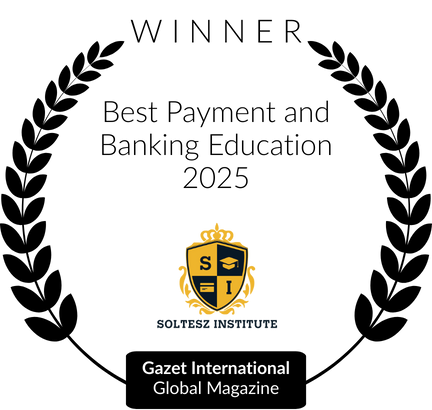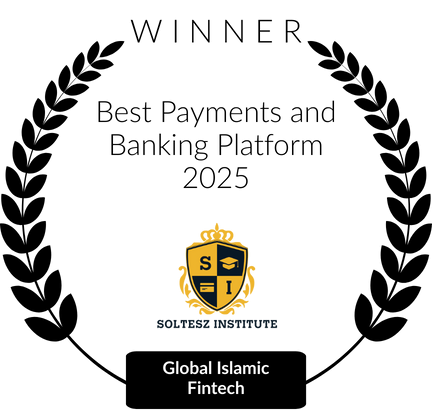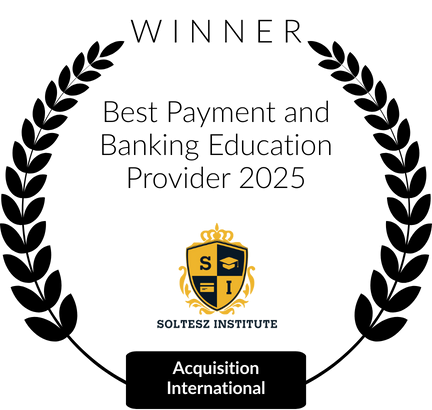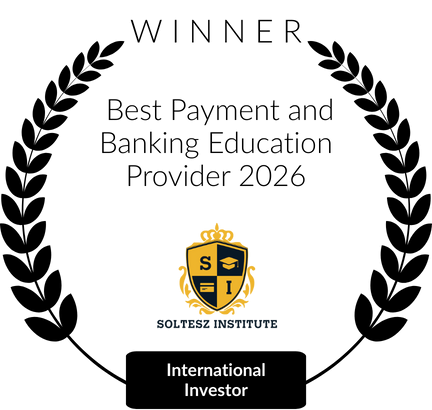LinkedIn
David is a Fintech Professional, Associated Professor of Management, with a history of professional experience in various business sectors: Financial Institutions, NGO, Construction and Education Management.
Mr.Kikvidze is an experienced professional in Regulatory communications, Fintech business models, Stakeholder engagement and Networking.
LinkedIn
Marcia is the CEO of Fintech Consulting and the "Instant Payments Maven". With 20+ years at major financial institutions, she's guided numerous products from concept to market.
Marcia's holistic view of the evolving payments ecosystem enables her to help financial institutions and fintechs navigate complex modernisation journeys. She focuses on practical solutions across various payment innovations, guiding clients through strategy, implementation, and delivery in today's dynamic landscape.
LinkedIn
Dato brings 17 years of experience in the banking sector and currently serves as the Head of Compliance and AML Department at a sister bank of an international German banking group. His expertise includes retail and business banking services, anti-money laundering (AML) strategies, regulatory compliance, and risk management.
Dato regularly conducts internal training sessions on AML topics, organizational code of conduct, and the business model and strategy of the institution.
LinkedIn
Mark Wagner is the Founder and President of Disputifier, a chargeback management software. Through Disputifier, Mark has handled millions of chargebacks and helped businesses and consumers to reduce the headaches involved with chargebacks.
LinkedIn
Alysson Smith is the co-founder and CEO of Flexibl, a company established in 2022 that specializes in payment analytics platforms designed to optimize revenue potential and enhance operational efficiencies for businesses. Under her leadership, Flexibl has developed solutions that integrate payment and software transaction data, providing key insights and monetization metrics to assist businesses in making informed decisions and streamlining financial operations.
LinkedIn
Georgia Papa is a Director and the Head of the Corporate and Commercial Department at Pyrgou Vakis Law Firm, a prominent legal practice in Cyprus. With extensive experience in corporate and commercial law, she specializes in mergers and acquisitions, banking and finance transactions, and compliance-related matters. Georgia's expertise enables her to provide clients with comprehensive legal advice tailored to their specific business needs.
LinkedIn
Ketevan Aghoshashvili is a Partner at IBCCS Georgia, where she leads the Financial and Tax Department. In this role, she provides clients with tailored solutions in taxation, accounting, and financial planning. Her expertise includes representing clients before regulatory bodies, resolving complex tax disputes, and obtaining licenses for special tax regimes.
LinkedIn
Joris Lochy is a Product
Manager at Intix, where he leads the continuous advancement of the Intix
Transaction Data Management platform. With over two decades of experience in
Financial Services, Fintech and IT, Joris specializes in Payments, Investments,
and Credit. His extensive expertise in fintech and innovative banking help in
expanding Intix’s capabilities and enriching its product offerings.
LinkedIn
Anna is a CEO and co-founder at Lex Law Office, the
leading law firm in Fintech and IT space.
Anna has extensive experience working for tax authorities and government
working groups. During her career, she has taken
part in the development of changes in regulation and cooperation between the
public authorities of Estonia. Due to this experience, Anna considers vital the
cooperation between innovations start-ups, government authorities and legal
experts to provide the elaboration of innovational technology and a supportive
business environment.
LinkedIn
Irakli's journey in the financial sector began over a decade ago, and during the past five years, he has dedicated himself to helping investors navigate complex financial landscapes. His role at IBCCS has allowed him to provide invaluable support to individuals and businesses seeking strategic solutions for tax optimization and efficient relocation.
Irakli Arjevanidze is a distinguished professional with a rich background in finance and a deep commitment to assisting investors with tax planning, relocation, analyses, and consulting. With a decade of experience in the financial sector and a Master of Business Administration (MBA) degree from European University Cyprus, Irakli brings a wealth of knowledge and expertise to his field.
LinkedIn
As a seasoned Head of Payments in Luxury Retail, turned entrepreneur, Vassilina brings 20+ years of international experience to help retail merchants to transform, build and scale their payment capabilities.
The multifaceted nature of payments demands a skillset that transcends traditional boundaries, merging technology proficiency with financial expertise, customer-centricity, innovation, customer lifecycle management, data analytics and leadership.
LinkedIn
His advisory firm IBCCS TAX can help with incorporation of companies in various jurisdictions, tax & legal advice, opening of corporate bank accounts, tax planning and accounting services. As a result of its services, IBCCS TAX helps investors to save on taxes & administrative costs and to avoid the bureaucracy, so that they can enjoy having higher profits, relax and travel around the world.
Cezary is a founder of IBCCS TAX Group and co-founder of regional offices of IBCCS TAX in Cyprus, Georgia, Estonia and Armenia. Cezary helps people and enterprises to plan their businesses and investments in tax-efficient manner. He specializes in international tax planning, tax advice, corporate management, business consulting.
LinkedIn
Elliott Locke, ACSI is the co-founder & CEO of abroaden. Elliott has 15 years of experience in finance, including in custodial banking, currency risk management, payments, open banking, and embedded where he has worked in operations, product development support, and marketing. Additionally, he has deep experience with early stage fintechs, having participated in various incubation and acceleration programs, including fintech-focused Tenity and MasterCard's MasterCard for Fintech Programme. Elliott holds degrees in Business Economics and qualifications from the Chartered Institute of Securities and Investment. Originally from the United States, Elliott has resided in Europe for over twenty year in both Brussels, Belgium and Barcelona.
LinkedIn
Jade W. Dagher the CEO of Expand Strategies. He studied Banking & Finance and acquired 23 years of experience in expanding small to medium companies in more than 15 countries.
He earned his Certified Management Consultant, CMC® designation and is always working on finding solutions for professionals aiming to expand their business and their retirement. Jade believes in the power of planning, organization, and discipline to be able to expand to a different level. He leverages also the power of technology and continuous learning. You can surely do an event at our cozy venue. Just let me know the date and time.
LinkedIn
Kyler Cheatham is a 40 Under 40 Winner, Global Women in Tech Speaker, Guest Lecturer at universities around the world, and a leading voice in ERP and enterprise technology.
As Chief Performance Officer at The Confluencial, she delivers real results by aligning people, process, and strategy—with technology as an enabler, not a crutch.Known for disrupting outdated industry norms, Kyler specializes in high-impact, speed-to-value tech implementations, helping organizations maximize ROI through strategic execution and data-driven decision-making. She’s an expert in leading teams through change, transforming technology into a growth engine rather than a bottleneck.Beyond her career, Kyler is a dedicated mom, community leader, and advocate for women in technology. She’s redefining how organizations approach enterprise applications, AI, and ERP—pushing the industry forward, one transformation at a time.
LinkedIn
Dr Stylianos (Stelios) Kampakis is the CEO of The Data Scientist. He is a data scientist and tokenomics expert with more than 10 years of experience.
He has 2 patents pending to his name, and has published 3 books on data science, AI and data strategy. He has helped many people follow a career in data science and technology.
His seminal work in token economics has led to many successful token economic designs using tools such as agent based modelling and game theory.He is a member of the Royal Statistical Society, honorary research fellow at the UCL Centre for Blockchain Technologies, the Cyprus Blockchain Centre, a data science advisor for London Business School and CEO of The Tesseract Academy.
LinkedIn
Jutta Pinko is a Berlin-based fintech
strategist, educator, and founder of PIN-Fin - a knowledge platform at the
intersection of finance, technology, and security. With over a decade of
experience across London, Israel, the Gulf, and continental Europe, she brings
a unique perspective shaped by her work as a journalist, financial analyst, and
security architect.
Jutta
specializes in helping founders and companies build smarter, safer financial
systems with strong narratives and lean, scalable infrastructure. Her mission
is to empower entrepreneurs and creators to turn any business into a fintech
business - ethically and sustainably.
LinkedIn
Mahmoud brings 18 years of progressive experience in the payments industry across the MEA region. Educated with a Bachelor's in International Business (Excellent) from Sadat Academy, his career includes contributions to leading firms, starting with the largest digital entity in Egypt. Mahmoud is recognized for his ability to build long-term businesses, drive growth, and cultivate new markets, consistently delivering significant business results through strategic product development and strong value propositions. His deep expertise in global payments and acquiring is enhanced by a well-established professional network. Currently, as Chief of Staff at Adyen MEA, Mahmoud also leads the acquiring and operations functions, overseeing product strategy, card network relationships, local partnerships, and regional expansion.
LinkedIn
As the Head of Enterprise Sales, UK and Europe at Nomupay, I lead a team of payments consultants who support businesses with robust and flexible gateway solutions, risk management and optimisation, and cost-effective and efficient acquiring and card processing guidance. I am passionate about delivering the highest levels of customer service and satisfaction, and I work closely with our partners and stakeholders to ensure we provide customer-led solutions that enable businesses to accelerate their growth and improve their liquidity, operational efficiency, and user experience.
LinkedIn
Eyal Sivan, also known as Mr. Open Banking, is one of the foremost global experts in the open banking space.In his efforts to drive advancements in open banking worldwide, Eyal created the unique personal brand Mr. Open Banking. Under this persona, he hosts the only podcast dedicated to the open banking community, interviewing the key leaders, innovators and influencers who are driving the emergence of open banking around the globe. Since its launch in 2020, the podcast has grown to over 90 thousand listeners and won several awards, with Eyal being recently recognized by Open Future World as the number one Open Finance Influencer in the world.Today, Eyal is the General Manager for North America at Ozone API, global pioneers of open banking who’s platform powers some of the largest and most advanced data sharing ecosystems on the planet. In his role, he is responsible for expanding the firm's global position as a leading open banking solution provider to the United States, Canada and beyond.
LinkedIn
Filippo Bergamin is the CEO of DoubleP, Italy’s first consultancy focused exclusively on payments. Based in Venice, he specializes in simplifying fintech and banking operations by crafting tailored Go-To-Market, Sales, and Business Development strategies.
Through DoubleP, he works closely with merchants to analyze their current payment setups and implement best practices or solutions that drive revenue growth, combining strategic consultancy with hands-on experience in the field. As a Partner at Intergic, Filippo brings the expertise gained from working with fintech unicorns, European scaleups, startups, and Italian banks, continuously driving innovation in the payments landscape.
LinkedIn
Kenneth Rijock is a leading expert in financial crime with a unique background that spans over four decades.
He is the only professional in North America who has served as a banking attorney for 17 years, a career money launderer for 10 years, and a compliance consultant in anti-money laundering (AML) for more than 30 years.
He is the author of the widely followed "Kenneth Rijock’s Financial Crime Blog" (rijock.blogspot.com), which has been active since 2011, and his autobiography, The Laundry Man.
Kenneth is also a Vietnam War veteran, having served in 1969 and 1970. His unmatched experience provides deep, first-hand insights into the mechanics of financial crime, enforcement, and global compliance practices.
LinkedIn
As CEO of Elcoin, Sergejs brings a strong blend of STEM-based academic expertise and executive leadership to the role.
With a firm commitment to business ethics and operational transparency, he ensures that every decision aligns with the highest standards of integrity and long-term value.
Known for a fresh, energetic management approach, Sergejs keeps Elcoin closely aligned with market trends and audience needs, ensuring the company remains agile and forward-thinking in its daily operations.
Guided by the insights and recommendations of Elcoin’s co-founders, Sergejs leads with a balanced decision-making process that considers both current challenges and time-tested business wisdom, driving the company’s continued growth and relevance.
LinkedIn
Edward is solicitor-advocate and Partner at Madison Legal Ltd with many years of experience in civil and commercial practice. After originally training as a barrister (year of call – 2005), Edward was admitted as a solicitor in England & Wales in 2008.
Edward has particular emphasis on disputes involving financial services, high value commercial contract disputes, arbitration, trusts and chancery and cross-border work. Edward has conducted numerous high value and complex commercial litigation and international arbitrations, including before the LCIA, ICC and LCA.
He has experience of European work, as well as cases from Russia (CIS), Asia, the Middle East, and Africa
LinkedIn
Julian is a commercially minded C level Payment expert with over 10 years experience within the payments industry which includes Business Development (B2B & B2C), Solution Orientated Sales, High Risk Markets together with a full understanding of correspondent banking, SEPA and SWIFT payments and strategic collaborations to ensure a very seamless approach to business.
He has built many companies over the time and successfully brought companies from a standing start to multimillion pound revenues.
LinkedIn
A passionate individual with a strategic vision in Islamic Finance with good advisory, research and product development skills with having 20 years experience in his field with the specialized expertise of Finance, Takaful, Sukuk & Micro Financial Engineering, Poverty alleviation Strategies, Training & Research, Structuring of Islamic Microfinance products and Islamic Financial Publication.
Apart from the Chief Executive officer of AlHuda Center of Islamic Banking and Economics, he is also founding director of “Islamic Microfinance Network” and Chief Editor of “’Islamic Microfinance News” – A dedicated Magazine on Islamic Microfinance. Zubair earned a M.Phil degree in Islamic Microfinance, and M.sc degree in Mass communication and also Research Scholar for Ph.D. He contributed his expertise of Islamic Finance in 40+ countries with Multilateral organization e.g. IFC-World Bank, UNDP, Islamic Development Bank,ADB, Yemen Microfinance Network etc. for poverty alleviation and social development.
LinkedIn
Kanchan Saxena is a Cybersecurity Consultant with over five years of experience in process consulting across healthcare, retail, banking and financial services, and information technology sectors. She specializes in helping organizations achieve and maintain security compliance, leading global projects in PCI DSS (3.2.1 and 4.0), ISO 27001:2013 and ISO 27001:2022 implementation, and SOC 1, SOC 2, and SOC 3 reporting.
Kanchan’s expertise extends to SAR, Microsoft SSPA, and GDPR compliance, as well as scoping, auditing, and reporting for major security frameworks.
She holds a B.A. LL.B., a Diploma in Cyber Law, and an LL.M. in Law and Technology with a specialization in cybersecurity and intellectual property rights.
Her professional certifications include PCI DSS Qualified Security Assessor (QSA), ISACA Certified Information Security Manager (CISM), ISO 27001:2022 Lead Auditor, and ISC² Certified in Cybersecurity.
LinkedIn
Anastasia Zencika is the Founder of Evotym, a fintech recruitment agency, and Fintech.Careers, a specialized job platform for the industry. With over 10 years of experience in fintech, she has personally conducted more than 1,000 interviews and successfully placed 100+ candidates into high-impact roles.Anastasia is driven by a clear mission: helping companies build happy, effective teams that drive sustainable growth.
LinkedIn
Christopher Salgado is the CEO of All Points Investigations, LLC, a global cyber, OSINT and physical investigative firm serving Fortune-listed corporations, law firms, and other organizations. A former investigator at Facebook, he brings over 25 years of expertise in various investigations, including cyber, OSINT, cryptocurrency, cyberstalking, romance scams, identify theft, cults, brand protection, supply chain, surveillance and SIU. He’s an expert at social engineering, threat management and corporate risk. Top Investigator of the Year by PI Magazine (2024), he is also a member of the London Speaker Bureau. Christopher has trained and presented to leading corporations, law firms, and law enforcement including the FBI, HSI, ICE, CBP, DEA, RCMP, Toronto Police, Interpol, Europol, and members of the European Commission.








